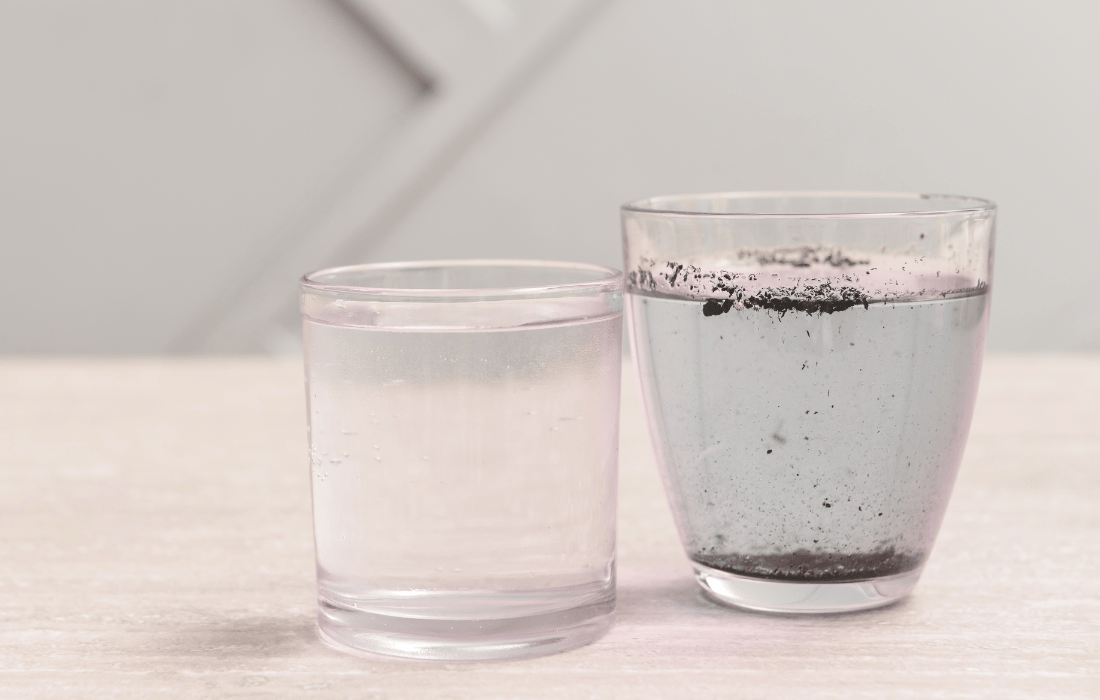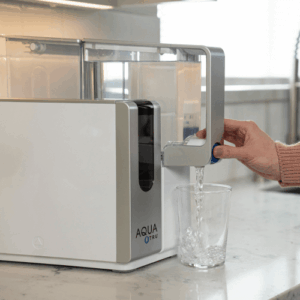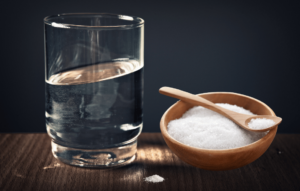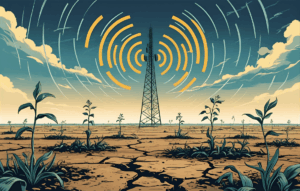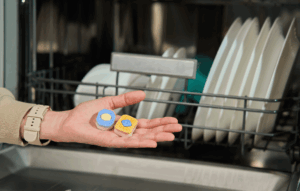An alarming new report from the Environmental Working Group (EWG), released in April 2025, analyzed test results from community water systems across 49 U.S. states. Nearly 6,000 systems—serving an estimated 122 million people—recorded unsafe levels of trihalomethanes (TTHMs) at least once between 2019 and 2023. These toxic byproducts are formed when disinfectants like chlorine react with organic matter, including manure, decaying vegetation, and human waste.
EWG’s report links the highest levels of TTHM exposure to regions with dense livestock farming operations. Six of the 10 worst-offending states in terms of TTHM contamination also rank among the top producers of cattle, poultry, or hogs. Texas leads the list, with over 700 affected systems serving more than 8.6 million people.
These findings highlight a sobering reality: our drinking water is being compromised not only by aging infrastructure but by industrial farming practices and inadequate regulations meant to safeguard public health. It’s not just rural towns or underserved areas that are impacted—this crisis affects Americans in major cities, suburbs, and small towns alike.
Trihalomethanes: Hidden Risks in a Treated Glass of Water
TTHMs—including chloroform, bromodichloromethane, dibromochloromethane, and bromoform—are regulated by the U.S. Environmental Protection Agency (EPA) under the Disinfectants and Disinfection Byproducts Rule. The legal limit for total TTHMs in public drinking water is 80 parts per billion (ppb). However, scientific evidence increasingly suggests that even levels well below this regulatory threshold can pose health risks.
Health Risks of TTHM Exposure
Exposure to TTHMs, even at low levels, has been linked to:
Multiple studies have shown that people exposed to TTHMs over long periods, particularly pregnant women, face elevated risks for both themselves and their unborn children. It’s not just drinking the water that matters, either.
Inhalation and Skin Absorption: The Overlooked Pathways
Activities like showering, dishwashing, and even doing laundry in hot water can expose individuals to TTHMs through inhalation of steam or absorption through the skin. According to a study published in Environmental Health Perspectives, participants who showered in high-TTHM water saw blood concentrations of the chemicals rise 5- to 15-fold. This complicates efforts to reduce risk, as it means that even filtered drinking water alone may not be enough to mitigate exposure.
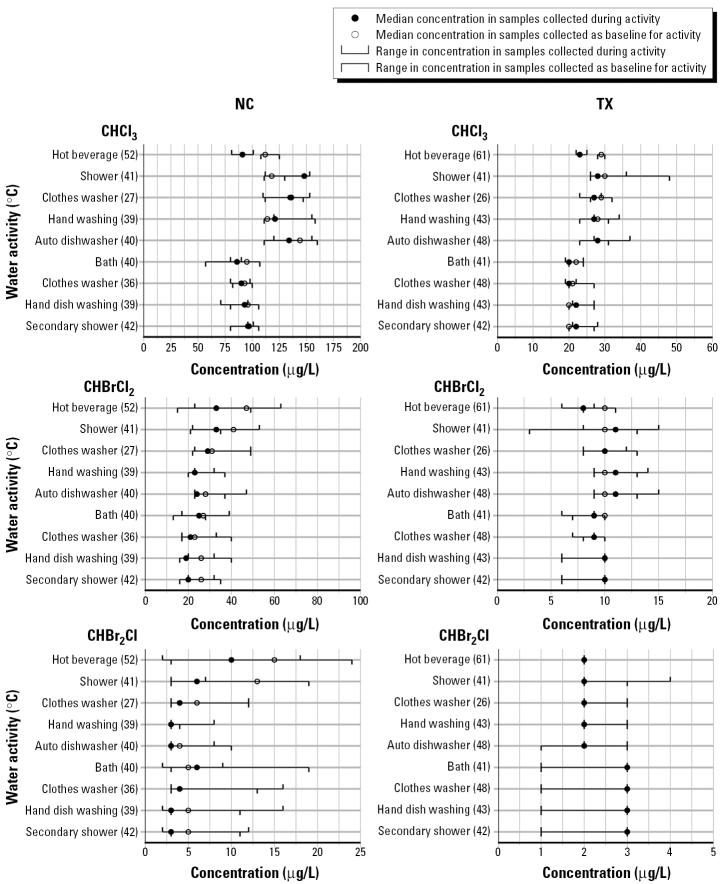
Agricultural Pollution and the Disinfection Dilemma
The intersection of industrial agriculture and municipal water treatment is where this crisis takes root. What starts on factory farms ends up in your faucet.
From Manure to Toxins
Animal waste runoff from concentrated animal feeding operations (CAFOs) plays a central role in this issue. When rain sweeps manure from fields into surface water supplies, utilities are forced to heavily disinfect the water—ironically creating toxic byproducts in the process. Manure itself contains nitrogen, phosphorus, bacteria, and organic matter that significantly contribute to the formation of TTHMs once chlorine is added.
How Disinfection Becomes a Double-Edged Sword
Disinfectants like chlorine are essential to prevent outbreaks of waterborne diseases such as cholera and typhoid. But when these chemicals interact with manure and other organic matter, they form TTHMs—a classic example of one environmental hazard triggering another.
While the original intent was to make water safe, the presence of industrial pollutants upstream turns disinfection into a chemical reaction with hazardous consequences.
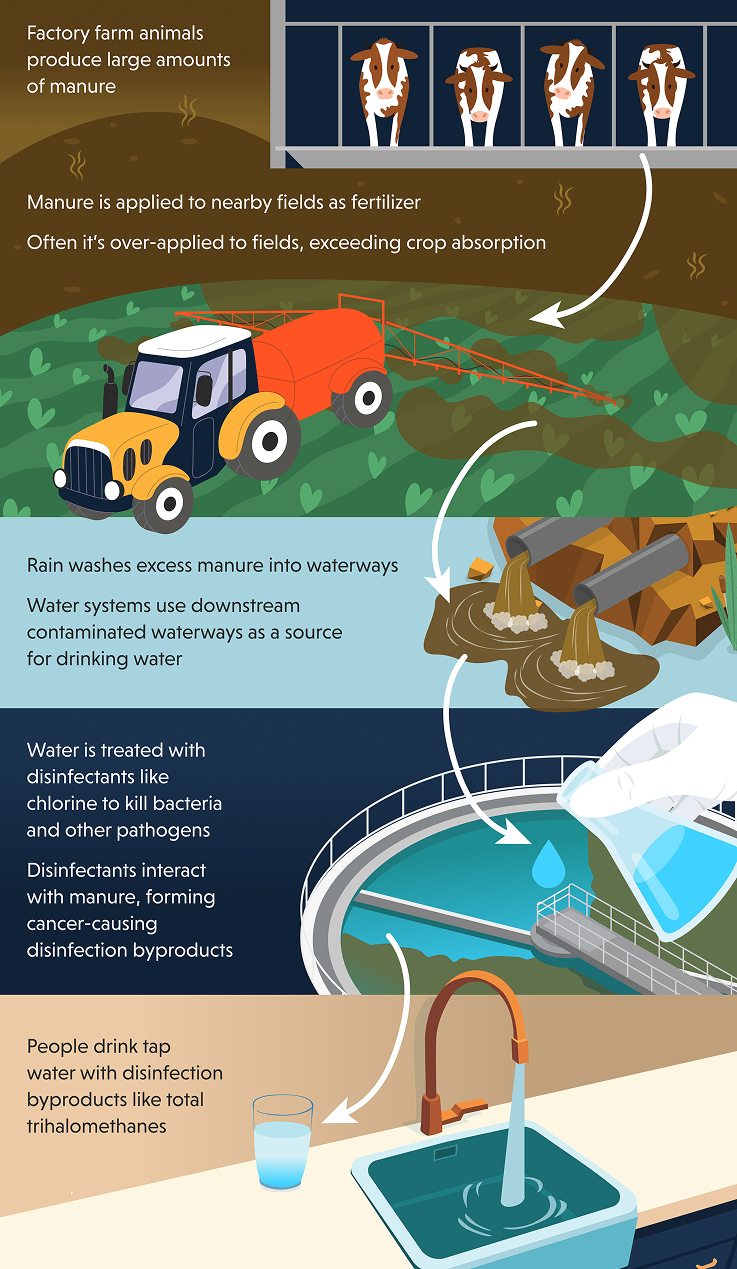
Environmental Toxins and Immune Health: The COVID-19 Connection
Most people associate chlorinated water with safety—not sickness. But a comprehensive 2022 review uncovered how chronic exposure to common toxicants, including disinfection byproducts like chloroform, may weaken immune defenses over time.
The review identified 80 modifiable contributing factors to immune dysfunction that worsen outcomes in viral infections like COVID-19. Among them: chlorination byproducts found in tap water.
These byproducts don’t just irritate cells—they may directly:
Weaken immune responses to viral pathogens
Increase systemic inflammation
Disrupt neural pathways and promote oxidative stress
This broader view—called a virology/toxicology-centric approach—calls on public health agencies to not only address the viruses themselves but also eliminate the environmental stressors that allow them to thrive in the human body.
In short, the toxins in our water might be doing more than harming organs or increasing cancer risk—they could be quietly lowering our resistance to disease.
Disparities by State and System Size
Not all communities face equal risk when it comes to drinking water contamination. The impact of TTHM exposure varies widely depending on geography and system size.
The Most Affected States
More than half of all violations occurred in just 10 states:
Texas: 707 systems, 8.6M people
New York: 371 systems, 14.4M people
Oklahoma: 353 systems, 1.9M people
California: 281 systems, 15.7M people
Illinois, Florida, North Carolina, Pennsylvania, Louisiana, and Kentucky also showed widespread contamination.
Together, these 10 states represent 54% of all systems testing above the EPA’s maximum allowable level of 80 ppb for TTHMs.
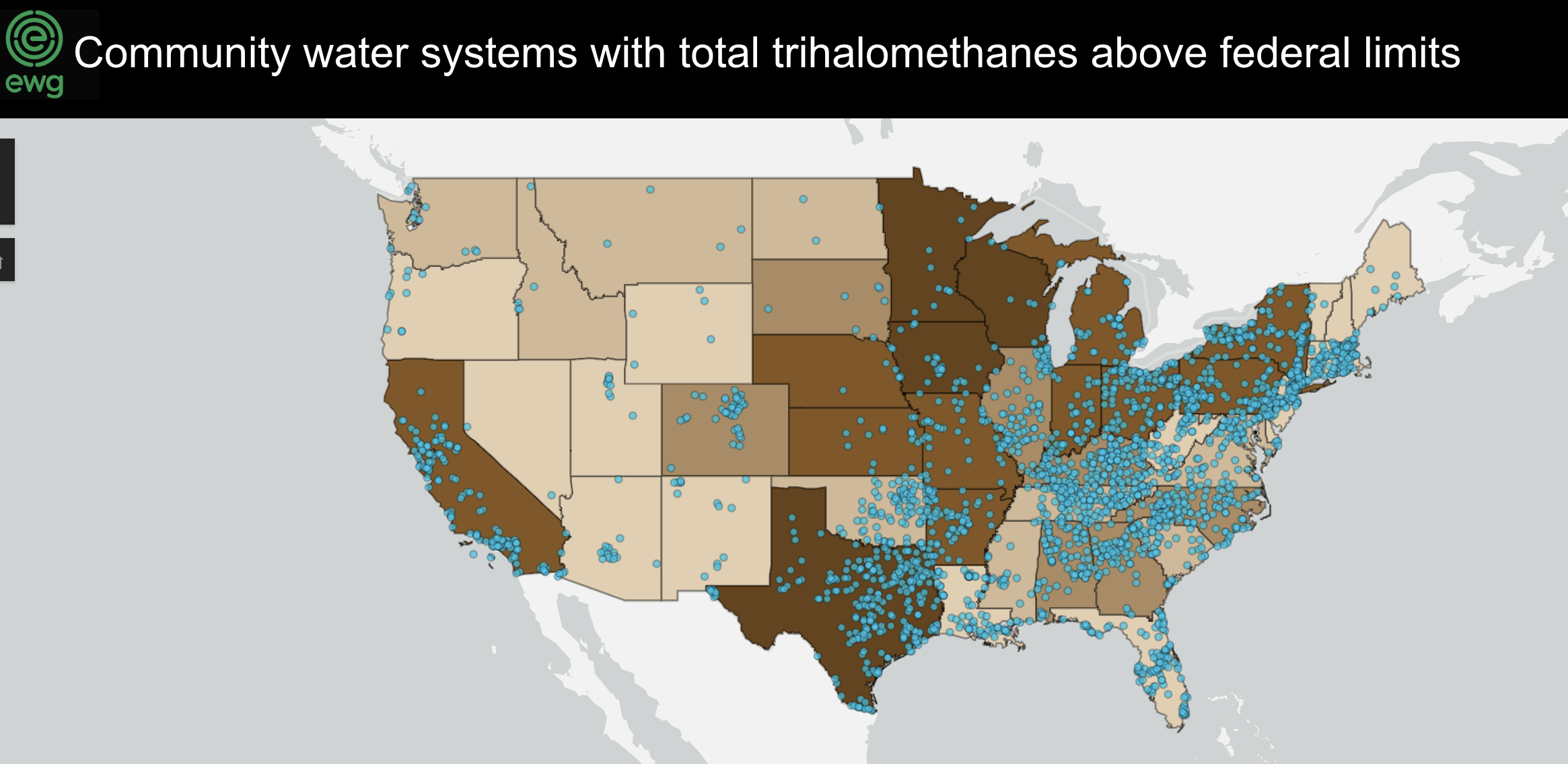
A Problem Across All Sizes
Contamination isn’t confined to rural towns. Systems serving both small communities and large metropolitan areas—including New York City, Los Angeles, and San Antonio—exceeded the EPA’s TTHM limit. Some systems, like Maryland’s Washington Suburban Sanitary Commission, recorded over 200 separate violations.
In fact, 16 of the largest water systems in the U.S., each serving over 1 million people, tested above the TTHM limit at least once. This includes well-known metro areas such as Phoenix, Philadelphia, Baltimore, and Las Vegas.
The Regulatory Gap: Why the EPA’s Limits May Be Too High
EWG’s health guideline for TTHMs is just 0.15 ppb—dramatically lower than the EPA’s 80 ppb legal cap. This level reflects a one-in-a-million lifetime cancer risk. Most U.S. water systems tested above that threshold at least once between 2019 and 2023.
California has adopted similar non-enforceable health goals, such as 0.06 ppb for bromodichloromethane. However, these guidelines are advisory, not legally binding. The EPA’s standards, while legally enforceable, often reflect economic and technical feasibility more than optimal health outcomes.
AquaTru: A Simple, Reliable At-Home Solution
For individuals and families concerned about the quality of their
drinking water, one of the most effective solutions is to install a high-performance reverse osmosis (RO) system. AquaTru’s countertop RO systems are certified to remove contaminants such as TTHMs, chlorine, fluoride, microplastics, and hundreds of other potential hazards—providing peace of mind in every glass.
Unlike standard pitcher filters or faucet attachments, AquaTru uses multi-stage filtration with a high rejection rate, offering protection that meets and often exceeds NSF standards. It’s a particularly powerful solution for those who live in communities served by aging infrastructure or frequently flagged water systems.
AquaTru systems are also incredibly user-friendly. They don’t require plumbing or installation and can be moved easily—ideal for renters, families, or anyone wanting an accessible, long-term solution to toxic tap water.
Why Remineralization Matters
While RO systems are highly effective at purification, they also strip beneficial minerals like magnesium, calcium, and potassium from the water. These minerals are vital for hydration, nerve function, and electrolyte balance.
To address this, consider adding a high-quality trace mineral supplement or using a remineralization cartridge. This ensures your water not only lacks toxins—but actively supports optimal hydration and cellular health.
Without proper mineral content, purified water can become “hungry”—meaning it may pull minerals from your body, further contributing to electrolyte imbalance, fatigue, or dehydration symptoms.
Toward a Solution: What Needs to Change
Fixing this problem won’t come from one single solution—it requires systemic change across agriculture, water treatment, and public awareness. Here’s what that looks like.
1. Reform Livestock Waste Management
Manure Buffer Zones: Implement buffer strips near waterways.
Rain Timing Restrictions: Avoid manure application right before or after rainfall.
Transparent Waste Planning: Expand manure management plans beyond just the largest farms.
Legislative Standards: Make runoff prevention plans mandatory for farms above a certain size, not just the biggest industrial operations.
2. Upgrade Water Treatment Systems
Granular Activated Carbon (GAC) and nanofiltration can remove organic precursors before disinfection.
Enhanced Coagulation: Improves removal of organic matter at treatment facilities.
Pre-Disinfection Screening: More testing and adaptive filtering to reduce organic matter pre-treatment.
3. Restore Funding for Conservation Practices
The Inflation Reduction Act originally allocated billions for conservation efforts. But with recent administrative freezes, only a small fraction has gone toward effective runoff prevention methods like filter strips or stream buffers. These funds must be reinstated.
Conservation subsidies should prioritize practices that reduce water pollution, not those that reinforce or subsidize CAFO-style waste production. This includes diverting funds from manure pit construction and redirecting them to real water-protective strategies.
4. Empower the Public
Use tools like EWG’s Tap Water Database to identify contaminants in local water supplies.
Install reverse osmosis purification systems with activated carbon filters at home.
Contact local representatives to advocate for stronger environmental protections.
Support local food producers who engage in regenerative, sustainable animal farming practices.
Final Thoughts: A Preventable Crisis
This isn’t just about bad plumbing or outdated water infrastructure—it’s about the systemic cost of industrial food production on human health. Our drinking water reflects the upstream choices made in agriculture, regulation, and policy. Without serious reform, the problem of disinfection byproducts will persist—and so will the growing health burden.
At the same time, tools and solutions do exist. From smarter farming practices and stronger regulations to home-based filtration systems like AquaTru, we have the ability to protect ourselves and our families.
Safe drinking water should be a guarantee, not a gamble. And right now, for over 100 million Americans, that guarantee is slipping through the cracks.

